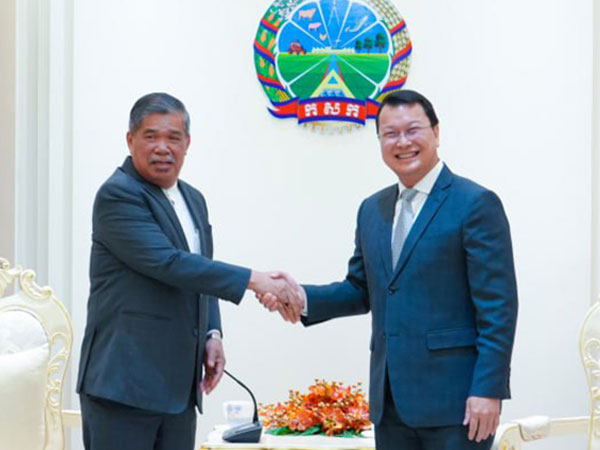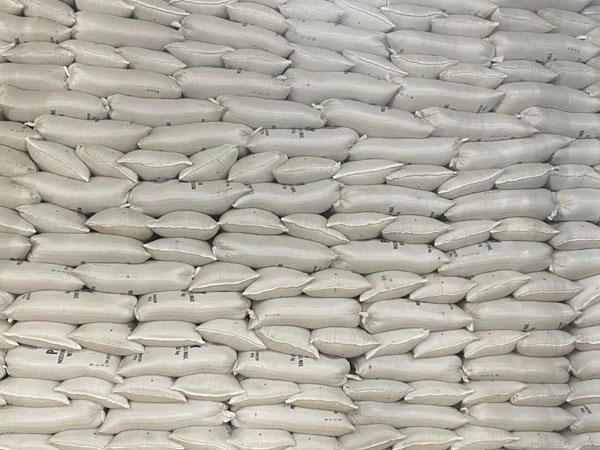 Agriculture has always been one of the defining features of Southeast Asia’s economy. In both Cambodia and Malaysia, the agricultural sector continues to play a crucial role, though in very different ways.
Agriculture has always been one of the defining features of Southeast Asia’s economy. In both Cambodia and Malaysia, the agricultural sector continues to play a crucial role, though in very different ways.
Cambodia remains deeply reliant on agriculture for rural livelihoods and export revenues. Malaysia, on the other hand, has developed one of the world’s strongest plantation-based economies but still depends heavily on imports for key food staples.
These contrasting agricultural landscapes are now converging as the two countries strengthen cooperation in trade, investment, and technology. Together, Cambodia and Malaysia are building a partnership that can support food security, economic diversification, and regional growth.
Cambodia and Malaysia are now deepening their agricultural cooperation, reflecting the natural complementarity between Cambodia’s production surplus and Malaysia’s import needs.
Malaysia, on the other hand, faces challenges in meeting its domestic food needs. With only about 700,000 hectares of rice cultivation, Malaysia produces far less than required, leading to an annual shortfall of several million tonnes.
On August 12, Senior Minister in Charge of Special Missions Othsman Hassan met Malaysia’s Agriculture and Food Security Minister Datuk Seri Mohamad Sabu to discuss key issues related to the agro-processing industry, including the import and export of halal agricultural products, which are priorities for both countries.
During the meeting, Hassan noted that Malaysia imports large volumes of agricultural products, particularly rice, to cover an annual shortfall of several million tonnes. Malaysia currently cultivates only about 700,000 hectares of rice, compared to more than 3.5 million hectares in Cambodia.
Both countries see strong potential in strengthening their partnership. Cambodia offers abundant agricultural products, while Malaysia has significant demand and the capacity to invest in processing and technology.
During recent meetings, both sides discussed boosting rice and fish trade, easing technical barriers such as sanitary standards, and promoting investment in areas like fresh milk production and agricultural processing. Such cooperation provides Cambodia with steady markets and opportunities to upgrade its agribusiness sector, while Malaysia can enhance its food security and diversify supply sources.
Mohamad made a working visit to Cambodia for three days in late February this year. According to the Embassy of Malaysia in Phnom Penh, the Malaysian Agriculture and Food Security Minister held a bilateral meeting with Agriculture, Forestry and Fisheries Minister Dith Tina to explore opportunities for strengthening agricultural cooperation between Malaysia and Cambodia.
The visit also provided the Minister with an opportunity to observe Cambodia’s agricultural market and explore potential areas for future collaboration in the field of agriculture between the two countries.
The MAFF’s statement reported that during the meeting, the Malaysian minister highlighted opportunities for cooperation between the two countries, emphasising Malaysia’s focus on food security.
He expressed interest in purchasing Cambodian rice and fish to help meet Malaysia’s supply shortfalls. Additionally, Malaysia indicated interest in investing in fresh milk production in Cambodia.
In response, Tina noted that the two countries have many complementary strengths that Cambodia has the capacity to produce high-quality rice and abundant fish, while Malaysia has a strong demand.
At the time, he requested that Malaysia ease technical barriers, such as sanitary and phytosanitary requirements, to facilitate Cambodian agricultural exports.
Tina also praised Malaysia for seeking high-quality rice, noting that Cambodian rice is considered a premium product—high-quality, delicious, and suitable for luxury markets.
The agriculture ministers of both countries agreed to promote agricultural trade to benefit their populations, ensuring that Cambodia has a stable market for its rice while Malaysia secures sufficient rice and fish to support its food security.
After his three-day visit to Cambodia, Mohamad held a short press conference to note that Cambodia has developed significantly since his last visit 11 years ago.
The minister noted that Cambodia and Malaysia have a long-standing relationship, including government-to-government and people-to-people ties. He highlighted that Malaysia played a role in accepting many Cambodian refugees during Cambodia’s internal conflicts.
He said that while his meeting with Tina did not result in a formal agreement, both sides were able to reach a mutual understanding. He also expressed Malaysia’s intention to import more rice from Cambodia.
Mohamad emphasised that Cambodia and Malaysia agreed to collaborate in response to climate change and to ensure food security in both countries. The Malaysian side expressed its intention to purchase Cambodian rice and freshwater fish to meet the country’s supply shortages. Additionally, Malaysia showed interest in investing in fresh milk production in Cambodia.
During his three-day visit, Mohamad visited a snakehead fish farm, a rice mill factory, and held discussions with the Cambodian Rice Federation. More importantly, he met with Tina.
Last month, Prak David, Secretary of State at Agriculture, Forestry and Fisheries Ministry met with YB Dzowahir An Ghani, Kedah State Assembly Member and his colleagues.
The meeting focused on discussing and understanding Cambodia’s agricultural sector, particularly the rice industry, to help meet Malaysia’s domestic supply shortages, and exploring other potential sectors for investment in Cambodia.
David highlighted that Cambodia produces high-quality, fragrant, and luxurious rice that can meet Malaysia’s needs. He also invited the delegation to participate in the upcoming CAFE25 programme later this year, which aims to promote Cambodia’s agricultural sector by linking investment with trade.
The programme will provide an opportunity to explore investment possibilities in key agricultural processing sectors and further develop Cambodia’s agribusiness.
According to the Cambodian Rice Federation, Malaysia is Cambodia’s third-largest rice export market, with an estimated 50,000 tonnes shipped annually. Of this, 95 percent consists of fragrant rice varieties, primarily Pka Romduol and Sen Kro Ob.
It added that among Malaysia’s 12 main rice suppliers, Cambodia ranks fifth. For the Cambodian market, the Pka Romduol and Sen Kro Ob varieties are considered high-quality and well-suited for domestic consumption.
Beyond rice, Malaysia also imports a wide range of agricultural products to meet domestic demand and is increasingly interested in halal-certified agricultural trade and investments in agro-processing industries abroad.














© Copyright 2025 The SSResource Media.
All rights reserved.